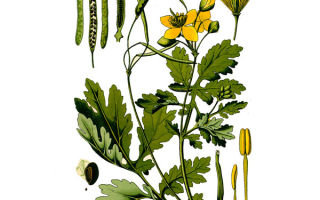Content
- 1 What does celandine look like and where does it grow
- 2 The chemical composition of celandine
- 3 Useful properties of celandine
- 4 What celandine helps from
- 5 Healing recipes with celandine
- 6 How to use celandine for medicinal purposes
- 6.1 With oncology
- 6.2 Psoriasis treatment
- 6.3 From polyps
- 6.4 From warts
- 6.5 Hemorrhoid treatment
- 6.6 Treatment of gynecological diseases
- 6.7 With prostate adenoma
- 6.8 With gastritis
- 6.9 For kidney stones and pyelonephritis
- 6.10 For respiratory tract diseases
- 6.11 For joint diseases
- 6.12 Liver treatment
- 6.13 From fungus
- 7 The use of celandine in home cosmetology
- 8 Contraindications to the use of celandine
- 9 Side effects and overdose
- 10 Collection and procurement of celandine
- 11 Conclusion
- 12 Reviews
The beneficial properties of celandine were noticed by people in antiquity. It is the property to cleanse the skin that gave the name to the plant. The benefits and harms of celandine indicate the need for careful use of the plant.
What does celandine look like and where does it grow
The perennial is beneficial in helping to get rid of calluses, acne, rashes, herpes, and fungus. One of the most famous benefits is the plant's ability to remove warts. In this connection, it is also called a warthog. The bright yellow juice gave rise to another name - golden herb.
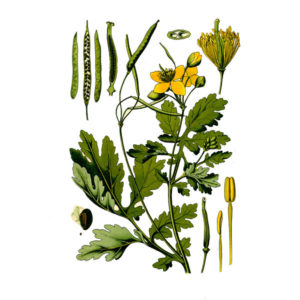
In reference books, you can find the names of witch's herb, damn milk. To avoid harm, the warthog must be used as carefully as possible.
The benefits of celandine for the human body have been known for quite a long time. Since the plant can be harmful due to its properties, you should know what the warthog looks like and where it grows. Otherwise, there is a risk of poisoning.
Golden grass is a perennial shrub of the Poppy family and has a height of up to 1 m. The perennial has a branched, ribbed and hollow stem, which is covered with infrequent hairs.
The leaves of the plant are soft and colored from above in a green color of a pronounced shade. A shrub can have leaves of different shapes, depending on the place of its growth. Pointed leaves are found in shrubs growing in the western regions.
The warthog is considered a hardy crop due to the peculiarities of the rhizome. The volume of the roots depends on the age of the golden grass. Flowering is observed from May to September. The flowers are composed of 4 bright yellow petals. The fruits appear several times during the season and look like pods. The plant dies after the end of Indian summer.
Golden grass has a rather thick juice, which is distinguished by its bright yellow color, specific smell, and bitter taste. Perennial grows almost everywhere in Europe. Celandine does not grow in the Far North. The first mention of the plant dates back to the 4th century BC. Several centuries ago, celandine was grown as an ornamental crop.
The medicinal properties of celandine are used not only in traditional medicine. On the basis of golden grass, medications are made for the treatment of various diseases.For example, in Bulgaria, plant juice is used as a remedy for pain against the background of gastritis, colitis. Polish experts recommend medicines made from perennials for inflammatory processes, hemorrhoids.
The beneficial properties of the herb celandine are used to activate the gallbladder, as an anticonvulsant and sedative, diuretic, laxative. The juice obtained from young plants has stimulating properties.
The chemical composition of celandine
The medicinal properties of celandine are due to its unique composition. The root system contains the maximum amount of chemicals. A large concentration of elements is observed in old plants. Thus, raw materials made from young grass have a mild effect. Poisonous properties are less pronounced.
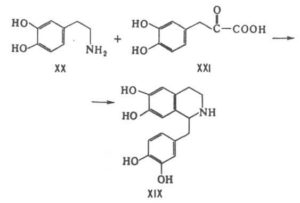
The chemical composition is represented by the following substances:
- Alkaloids... Gold herb is beneficial due to its content of over 20 alkaloids. The term designates substances of an organic nature, containing nitrogen and characterized by high activity. The low alkaloid content has a therapeutic effect (calming, analgesic, local irritant). In high concentrations, the substances are harmful, as they are plant poisons.
- Essential oils... A mixture of nitrogen-free substances dissolves well in alcohol and fats. The esters contained in celandine have anti-inflammatory, antimicrobial and antispasmodic properties. The substances are beneficial by relieving spasms of blood vessels and smooth muscle fibers.
- Saponins... These are organic plant components that form foam when mixed with water. The benefits are calming and diuretic.
- Amines... Substances take part in vital processes. The beneficial property is also manifested in the reduction of pressure.
- Flavonoids... The elements are poorly soluble in water and have a yellow color. The benefit lies in antispasmodic properties, which are directed to the smooth muscles of blood vessels and organs. The beneficial properties also include antiallergenic, anticancer and antiviral effects. Flavonoids have a beneficial effect on the functioning of the immune system.
- Organic acids. Amber, citric and malic acids are directly involved in metabolic processes.
- Vitamins... Celandine contains vitamins C and B-carotene, which are beneficial in the form of strengthening the immune system, antiviral, anti-cancer, antioxidant properties.
Useful properties of celandine
A plant can be both beneficial and harmful. It depends on the correct use of the beneficial herb.
Golden herb has a number of medicinal properties. Among the most significant useful properties are:
- anti-inflammatory;
- pain reliever;
- diuretic;
- choleretic;
- laxative;
- bactericidal;
- antineoplastic and anticancer;
- fortifying;
- antiviral.
Celandine has benefits for the nervous system, and also allows you to reduce pressure and eliminate spasm of smooth muscle fibers.
What celandine helps from
The beneficial properties of golden herb allow it to be taken in accordance with different indications. Celandine is beneficial for the following pathologies:
- stagnation of bile;
- pathology of the liver and gallbladder;
- lethargy of the intestines;
- chronic diseases of the stomach and kidneys;
- rheumatism;
- inflammation of the nasopharynx, oropharynx, urinary tract;
- oncopathology;
- skin lesions with eczema, psoriasis, fungus;
- skin rashes and formations (warts, acne, condylomas, papillomas);
- depression and neurosis.
Healing recipes with celandine
Due to its beneficial properties, there are several uses for golden herb.
Celandine juice
The benefits of celandine juice are not in doubt. It is used for the purpose of cauterization of various skin formations:
- genital warts;
- corns;
- warts.
The juice is beneficial in treating the manifestations of lupus, but only in the early stages. The product should be applied three times a day, pointwise, avoiding penetration into healthy skin areas. Gradually, the upper layer of the formation undergoes drying out. It must be carefully removed after water-hygienic procedures before direct application of the product.
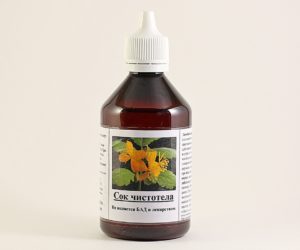
The beneficial properties of the juice are used for diseases of the nose, pharynx, which are inflammatory. It is recommended to instill 2 drops of juice, which is diluted with boiled water in a ratio of 1: 2, into each nasal passage.
In order to get fresh juice, it is necessary to break the stem of the plant in the thickest place. The formations are cauterized with orange juice. If you need to get juice for future use, you need to dig out the grass along with the root and rinse thoroughly. Then the celandine is finely chopped, chopped with a blender and squeezed out with gauze. The juice is poured into a jar and covered with a lid. The resulting product is stored in a dark and cool place.
Fermentation begins after a few days and indicates the need to release gases, after which the jar is closed again. The procedure is repeated 2-3 times. The readiness of the product is indicated by the absence of gases or the formation of bubbles. If stored properly, the prepared solution can be stored and used for up to 3 years.
Infusion of celandine
The infusion of celandine is used for internal use, which is associated with analgesic, diuretic, strengthening properties. The remedy is useful for cramps and colic in the digestive tract, the formation of kidney stones and gall bladder, jaundice.
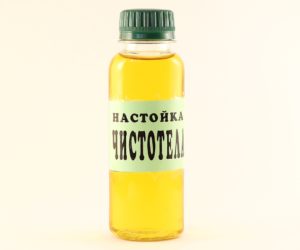
Alcohol tincture of celandine
Tincture of celandine can be used with benefit for neuroses and hypertension. To prepare the product, you need to pour a tablespoon of dried celandine with 200 ml of alcohol. The solution is infused for 2 weeks in a dark place, and then stored in the refrigerator. In order for the celandine tincture to show its properties, it is taken three times a day, 5 drops after a meal.
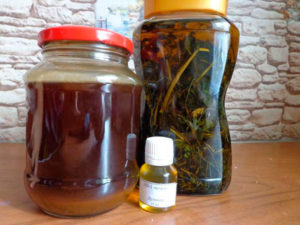
Celandine broth
A decoction of celandine is not recommended for internal use, since the benefit lies in the external application of the product. To prepare the broth, a tablespoon of dry herb must be poured with 300 ml of water, and then boiled for 5 minutes. Wipe cleansed skin with a filtered solution. Daily use can get rid of acne within a week.
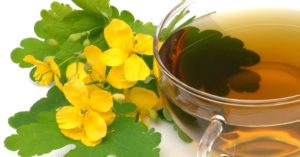
Celandine ointment
The folk remedy is beneficial by eliminating calluses and warts. The golden herb ointment can also be used for psoriasis, genital warts, eczema. The beneficial properties are manifested in the disappearance of age spots and freckles.
To prepare the ointment, medical petroleum jelly and fresh juice are mixed, taking into account the ratio of 4: 1. The tool is applied pointwise up to 3 times a day. The prepared ointment must be stored in the refrigerator and used within 2 years.
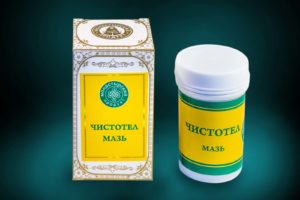
Celandine oil
Celandine oil has beneficial properties that justify its use in the treatment of papillomas, warts, boils, herpes, corns, eczema, lichen and psoriasis. Benefits can be expected if the oil is applied to the affected area twice a day. After 15 minutes, wash off the oil from the skin.
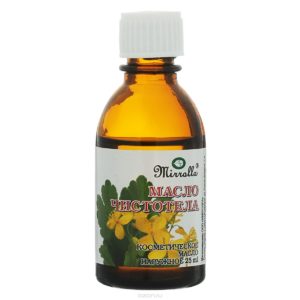
How to use celandine for medicinal purposes
The use of a specific dosage form depends on the characteristics of the pathology.
With oncology
Celandine is beneficial for oncology.A tangible effect can be expected with the treatment of pathology at an early stage. However, official medicine is skeptical about the properties of celandine in oncology.
Perennial can be used for malignant tumors of the mammary and pancreas glands, colon. Herbalists advise taking an infusion, and for skin cancer - an ointment.
Psoriasis treatment
To reduce the severity of psoriasis symptoms, you can lubricate the skin with an ointment made from the juice of a poisonous plant and petroleum jelly. Processing is carried out twice or three times a day.
From polyps
Nasal polyps are benign formations that appear due to frequent or prolonged infectious processes, as well as allergic reactions. Treatment is predominantly surgical. Perennial juice will help stop the growth of polyps.
Celandine benefits and treats intestinal polyps. With this pathology, enemas can be made from the sap of a plant, which has many beneficial properties. A few drops of juice are diluted in 50 ml of warm boiled water.
From warts
Warts are the result of HPV infection. As a folk remedy, you can use the juice of the golden herb, which has many beneficial properties. Fresh juice is applied pointwise to the formation after performing hygiene procedures.
Hemorrhoid treatment
An oil medication is beneficial for hemorrhoids. Painful nodes are lubricated with oil 2-3 times during the day.
Treatment of gynecological diseases
The beneficial properties of celandine allow it to be used in gynecology. In particular, the oil can be used in the treatment of vaginosis. A few drops of the product should be applied to the tampon before insertion into the vagina. It is advisable to perform the procedure before bedtime.
With prostate adenoma
For diseases of the prostate gland, enemas are made with a solution of celandine juice. To dilute the solution, use 5-7 drops of juice and 50 ml of water. The inflammatory process can be stopped with a solution of 2 teaspoons of golden herb and half a glass of water.
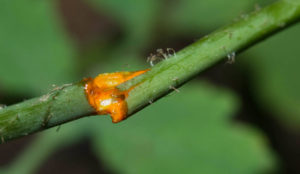
With gastritis
Treatment is carried out exclusively in the absence of an exacerbation of the disease. The folk remedy is taken in the form of infusions and decoctions.
For kidney stones and pyelonephritis
With urolithiasis and kidney inflammation, doctors recommend taking an infusion. To prepare it, you need to pour 200 ml of boiled water over a teaspoon of dried herbs and leave for an hour. The tool is taken 3 times a day. The dosage is 1 teaspoon.
For respiratory tract diseases
The plant is useful for inflammatory processes of ENT organs, for example, a runny nose, sinusitis, sore throat and bronchitis. To eliminate the symptoms of diseases and increase immunity, an infusion and tincture based on celandine are prescribed. In case of damage to the paranasal sinuses, fresh juice of golden grass can be dripped into each nasal passage.
For joint diseases
Perennial lotions and ointments help to cope with inflammation and pain that occurs against the background of the progression of arthritis or arthrosis.
Liver treatment
Celandine benefits the liver. The infusion should be taken on an empty stomach in the morning and evening, 1 tablespoon.
From fungus
A fungal infection or thrush occurs in almost every woman. Vaginal inflammation is caused by Candida. Perennial has beneficial properties aimed at eliminating thrush. Treatment is carried out in the form of decoction douching.
The use of celandine in home cosmetology
Perennial is used for cosmetic purposes due to its beneficial properties.
For facial skin
The benefits of celandine for the skin of the face are manifested in the form of getting rid of age spots, freckles and papillomas. Skin formations are eliminated through the use of decoctions and spot moxibustion.
Hair care
The benefits of celandine for hair can be expected with the correct use of the folk remedy. The shrub contains essential oils, vitamins that have a beneficial effect on the scalp and hair condition. The maximum useful properties are noted when using decoctions and infusions as a rinse after shampooing.
Celandine bath
The benefits of celandine when used in a bath are undeniable. The plant has been used since ancient times for the prevention and treatment of many diseases. Baths with celandine have benefits, which include the elimination of skin rashes, the normalization of the psycho-emotional state. For taking a bath, you can use a dried or fresh plant, infusions and decoctions.
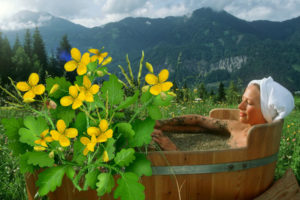
Contraindications to the use of celandine
Celandine can provide not only benefits, but also harm to health. Experts point out that all parts of the golden grass are poisonous. Dosages for internal use are minimal. Exceeding them is unacceptable. The treatment course does not exceed two weeks. Otherwise, celandine can be harmful.
Celandine is not used in the following cases:
- pregnancy;
- individual intolerance;
- lactation;
- age up to 3 and 12 years (externally and internally);
- mental disorders;
- epilepsy;
- angina pectoris;
- chronic constipation;
- dysbiosis and diseases of the liver, stomach, prolonged and severe course;
- bronchial asthma.
Side effects and overdose
Celandine can be harmful due to its properties. The shrub is poisonous due to the content of alkaloids. With a slight overdose, harm manifests itself in the form of the following symptoms:
- dizziness;
- paralysis;
- convulsions;
- vomiting.
If you use drugs for a long time, it is possible to cause harm, manifested by dysfunction of the digestive system:
- dysbiosis;
- vomiting;
- constipation;
- nausea.
Side effects often occur on the background of an overdose or individual sensitivity. Adverse reactions when ingested internally involve causing harm, which is manifested by:
- dizziness;
- nausea;
- weakness;
- insomnia;
- hypotension;
- anxiety.
For topical use, adverse reactions include burning, swelling, redness, itching, and pain.
Collection and procurement of celandine
In pharmacies, you can buy the drug in the form of dry herb, oil or ointment. However, the prevalence of perennials allows you to harvest it yourself.
It is known that absolutely all parts of the shrub have useful medicinal properties. The green parts must be harvested during the flowering period. They are crushed and dried in a well-ventilated area for the subsequent preparation of tinctures, infusions and decoctions.
Some herbalists dry the whole shrub without a root. For this purpose, it is suspended until completely dry, which is evidenced by the characteristic crunch.The roots of a useful plant are also dried separately after thorough washing.
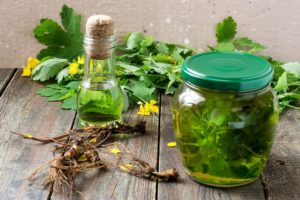
Conclusion
The benefits and harms of celandine are associated with characteristic properties. Perennial has a unique composition that can be harmful if used incorrectly.
Reviews

